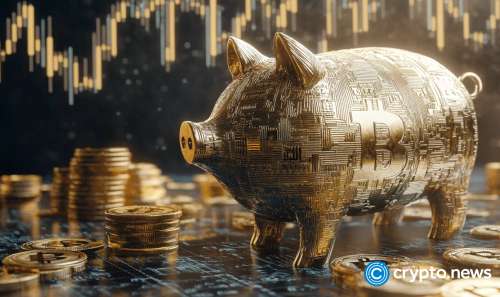Highlights
- Gold has hit record-high prices, outperforming other assets in 2024.
- The Federal Reserve’s interest rate cuts have contributed to increased gold demand.
- Investors are viewing gold as a safe haven amid geopolitical tensions and economic uncertainty.
- Gold’s rising performance could signal broader market trends and potential shifts in investment strategies.
In recent months, gold has consistently reached new heights in value, surpassing previous records and outpacing other asset classes.
The initial major increase occurred in early March when gold prices jumped to $2,160 per troy ounce, reflecting an 8% rise from the previous high of $2,135 set in December 2023. By April, gold had set another record, with further milestones achieved in May and August.
The price has since maintained its upward trend, reaching a new peak of $2,584.09 per ounce by September.
This surge has sparked widespread interest, with many investors turning to the precious metal as a safe haven in uncertain economic times. But what does this increase in gold’s performance mean for the economy as a whole?
As gold continues to gain momentum, it offers a reflection on current market trends and the broader economic landscape.
The Impact of Fed Rate Cuts on Gold’s Performance
One of the major contributors to gold's increasing value has been the recent Fed rate cuts. Lower interest rates tend to reduce the attractiveness of fixed-income investments like bonds, prompting investors to look for alternatives, such as gold, to store value.
With the Federal Reserve implementing a series of rate cuts in response to concerns over the U.S. job market and inflation, gold has emerged as a preferred investment.
These rate cuts not only make borrowing cheaper, but they also lead to a weaker U.S. dollar, further boosting gold’s appeal as a hedge against currency depreciation.
As Michel Saliby, senior market analyst at FxPro, explains, “When central banks cut rates, they weaken their currency, and this fuels the demand for tangible assets like gold.”
Furthermore, as market trends lean toward uncertainty, gold’s performance shines even brighter. Investors are seeking stability in an otherwise volatile market, and gold, being a physical asset, offers reassurance in turbulent times.
The Role of Geopolitical Tensions and Market Uncertainty
Geopolitical instability has always been a driver for gold investment. In 2024, conflicts in Gaza, Ukraine, and other regions have prompted investors to flock to gold as a safeguard against unforeseen disruptions in the global economy.
Gold’s role as a safe haven is well-documented, and in times of uncertainty, its value often climbs as investors seek refuge from more volatile assets.
Joe Cavatoni, senior market strategist at the World Gold Council, noted, “Central banks and investors are increasing their gold reserves in response to heightened concerns over inflation and global economic stability.” This has led to sustained demand for gold, with analysts predicting further price growth as these tensions persist.
Moreover, recent Fed rate cuts have exacerbated concerns about the U.S. economy, particularly regarding inflation and job growth. Investors are increasingly turning to gold to diversify their portfolios and hedge against potential economic downturns.
Gold’s Appeal for Investors
The rising value of gold has reinforced its appeal as a reliable investment. Many view gold not only as a hedge against inflation but also as a safeguard against potential economic crises.
With market trends showing increased volatility in stocks and bonds, gold offers a tangible alternative for investors looking to preserve their wealth.
Additionally, advancements in technology and renewable energy sectors have expanded gold’s use beyond jewelry and traditional investments. As demand for gold in technological applications continues to grow, it is expected to further boost its price.
The finite nature of gold, coupled with stable mining output, has led analysts to predict that gold could reach $3,000 per ounce in the near future.
Despite these predictions, financial experts warn investors not to succumb to the fear of missing out (FOMO). Instead, they recommend a balanced investment strategy that takes into account potential risks.
“While gold is an excellent diversification tool, it’s important to maintain a diversified portfolio and not concentrate all investments in one asset class,” advises Saliby.
What This Means for the Economy
The rise in gold prices reflects deeper concerns within the global economy. Many factors are presently contributing to the increased flock of investors to gold.
While some view this surge as a temporary reaction to current economic conditions, others see it as a longer-term trend that could signal shifts in global investment strategies.
For now, gold remains a key player in the economic landscape, providing both stability and growth potential for investors. Its performance will continue to be closely watched as the economy grapples with uncertainty.
Final Notes
Gold’s increased performance, driven by Fed rate cuts, geopolitical instability, and a growing demand for safe investments, highlights its unique role in the modern economy.
As investors seek to protect their wealth and capitalize on rising prices, gold's status as a reliable asset has only strengthened. Moving forward, its impact on market trends and investment strategies will be an essential component of economic analysis.




